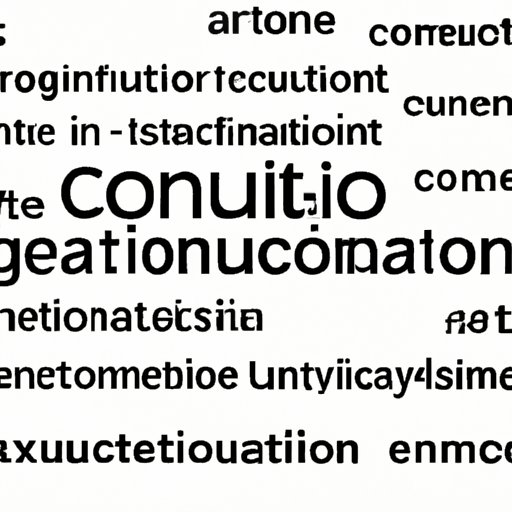Introduction
Connotation is an important concept in literature that can have a powerful impact on the way readers interpret a text. It refers to the implied or associated meanings behind words, which can often be more significant than their literal definitions. By exploring the role of connotations in literature, we can gain a greater understanding of how language can be used to convey deeper meaning and emotion in writing.

Exploring the Role of Connotations in Literature
In order to understand the role of connotations in literature, it is first important to understand the difference between denotation and connotation. Denotation refers to the literal definition of a word, while connotation refers to the implied meaning or emotional associations associated with a word. For example, the word “home” has a positive connotation because it typically brings to mind feelings of comfort and security. On the other hand, the word “house” has a more neutral connotation because it simply refers to a structure without any particular emotional associations.
Connotations play an important role in literature because they allow authors to add layers of meaning to their works. By choosing words with the right connotations, authors can evoke a certain mood or emotion in the reader and convey deeper messages about their characters and themes. For example, in Charlotte Bronte’s novel Jane Eyre, the protagonist’s journey is described using words with positive connotations such as “liberation” and “discovery” that emphasize her growth and transformation.

Unpacking the Meaning Behind Connotations in Writing
When analyzing connotations in literature, it is important to consider both the subtext and the cultural significance of the words being used. The subtext refers to the underlying message or meaning behind a word, while the cultural significance refers to the shared understanding between reader and author. For example, the word “freedom” has a positive connotation in most contexts, but in some cases it might have a negative connotation depending on the cultural context in which it is used.
It is also important to consider the implications of connotations in literature. Implications refer to the consequences or effects that a word or phrase can have on the reader. For example, a character’s dialogue may be laced with words with negative connotations, which can subtly influence the reader’s perception of the character and their actions.
Analyzing Connotations and Their Impact on Literary Works
When analyzing the impact of connotations in literature, we can examine how they can change the reader’s perception of a work. Words with positive connotations can create a sense of hope and optimism, while words with negative connotations can create a feeling of despair and hopelessness. In addition, connotations can affect the overall mood and tone of a literary work. For instance, if a story is filled with words with positive connotations, it will likely have a more uplifting tone, whereas if it is filled with words with negative connotations, it will likely have a darker, more somber tone.
How to Use Connotations to Enhance Your Writing
Using connotations to enhance your writing can be a great way to add depth and nuance to your work. When choosing words for your writing, try to select ones with the right connotations for the situation. For example, if you are writing about a happy moment, choose words with positive connotations such as “joy” or “delight”. Conversely, if you are writing about a sad moment, choose words with negative connotations such as “grief” or “despair”.
You can also incorporate connotations into your writing for effect. For example, if you want to create a feeling of tension or suspense, you can use words with negative connotations such as “dread” or “fear”. Similarly, if you want to create a feeling of joy or excitement, you can use words with positive connotations such as “ecstasy” or “elation”.

Examples of Common Connotations Found in Literature
The following are some examples of common connotations found in literature:
- Positive connotations: love, hope, freedom, joy, happiness, courage, peace
- Negative connotations: hate, despair, oppression, sorrow, misery, fear, violence
These are just a few examples of the types of connotations that can be found in literature. By exploring the different connotations of words, authors can add layers of complexity and meaning to their works.
Conclusion
Connotations are an important concept in literature that can have a powerful impact on the way readers interpret a text. By understanding the role of connotations in literature, we can gain a greater appreciation for how language can be used to convey deeper meaning and emotion in writing. Additionally, by incorporating connotations into our own writing, we can create a richer and more meaningful experience for our readers.
In conclusion, connotations are an essential tool for writers to use in order to create a deeper understanding of their work. By analyzing the subtext and cultural significance of connotations, we can uncover the hidden meanings behind words and use them to enhance our writing. Finally, by selecting words with the right connotations, we can evoke a certain mood or emotion in the reader and convey a deeper message about our characters and themes.
(Note: Is this article not meeting your expectations? Do you have knowledge or insights to share? Unlock new opportunities and expand your reach by joining our authors team. Click Registration to join us and share your expertise with our readers.)
